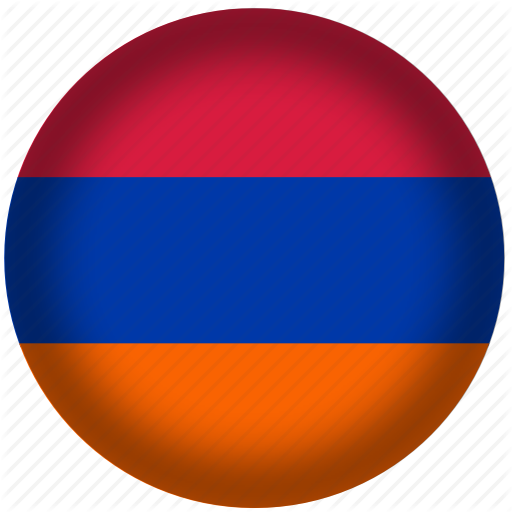Vestnik (series: physical-mathematical and natural sciences), №2/2024
CONTENT
MATHEMATICS AND COMPUTER SCIENCE
|
Vardanyan E. Second order approximations for “Windy Gridworld” models ABSTRACT. It has already been shown that moment closure approximation can be helpful for deriving analytical estimations for the distributions of parameters in different stochastic processes. In this paper we consider a stochastic process known as the “Windy Gridworld” model. In this model an agent moves in a grid and its policy is not deterministic, meaning it can slip and make a wrong step. Creating algorithms for navigation in such environments is often tackled using model-based Reinforcement Learning, where the modeling of the environment is a crucial step. In this work we derive closed-form equations that describe the dynamics of the mean and the variance of the robot's position in 1-dimensional and 2-dimensional “Windy Gridworld” models using moment closure approximation and compare the results with numerical values obtained with computer simulations.. |
7 |
|
Rushanyan A. R Facial expression recognition model “SEGAN-CNN” ABSTRACT. The model of facial expression recognition (FER) for the purpose of functioning of the human-computer interaction system is proposed. This article presents the development and testing of the “SEGAN-CNN” facial expression recognition model. The study describes the experimental setup, training process and performance metrics. The implementation of the model includes the classical methodology of its construction, the first step consists of image preprocessing, i.e. extraction of the face areas from the input image. At the second stage, the generative-adversarial network CEGAN, which also generates synthetic data in order to increase the training sample, is applied to improve it by increasing the resolution and to complete the parts of it covered by hands or accessories. In the third step, a set of generated images of faces with different emotions is fed to a neural network (CNN), after training it, classification is performed. The architecture of both the FER model as a whole and the CNN model is presented. |
15 |
PHYSICAL AND TECHNICAL SCIENCES
|
Mkhitaryan N. Features of Raman Scattering of Lithium Niobate Crystals Doped with Thulium Ions ABSTRACT. Raman scattering spectra of lithium niobate single crystals doped with rare earth thulium ions LiNbO3:Tm3+ were obtained under laser excitation at wavelengths of 785 nm and 532 nm. Changes in the composition and structure of crystals as a result of doping are assessed. The mechanisms of the appearance of broadband lines in the obtained spectra upon excitation by a 785 nm laser, beside the allowed Raman modes, are discussed. |
31 |
CHEMICAL AND BIOLOGICAL SCIENCES
|
Gharibyan Y. Green Synthesis of Pyrimidine Derivatives based on Chalcones and preliminary evaluation of their biological properties. ABSTRACT. The synthesis of pyrimidine derivatives was carried out both by traditionalmethods and under the action of microwave irradiation, corresponding to the main requirements of “Green Chemistry”. It was shown that with microwave activation of reagent molecules, the yield of final products increases, and the reaction time and energy consumption are sharply reduced. In this case, a total saving of energy costs of 6-12 times is achieved. |
38 |
|
Hambardzumyan Y., Manukyan A., Tiratsuyan S. Alzheimer's Disease: Neuropathologies, modern concepts, molecular mechanisms, prevention and treatment strategies ABSTRACT. Alzheimer's disease is an irreversible, chronic, progressive neurodegenerative disease of the brain that slowly destroys memory and thinking skills. The disease ranks third after cardiovascular and oncological diseases. Alzheimer's disease is characterized by the accumulation of beta-amyloid plaques, neurofibrillary tangles, and hyperphosphorylation of the tau protein (τ) in neurons, which is associated with microtubules in the brain, causing neuronal disintegration, synaptic dysfunction, and neuronal death, leading to dementia. Genetic, age-related, and environmental factors contribute to a metabolic shift that favors amyloidogenic processing of APP instead of the physiological. Astrocytes play a key role at the "tripartite" synapse, where perisynaptic astrocytic processes span preand postsynaptic elements of neurons; and maintain neuronal homeostasis by scavenging excess neurotransmitters or releasing gliotransmitters. The hippocampus is known to be particularly vulnerable to degenerative changes. |
47 |
|
Oganesyan A., Oganyan S., Kazaryan Sh. Antimicrobial resistance: the coming silent Pandemic ABSTRACT. Despite the increasing number of antibacterial agents in clinical development, there is an urgent need for new innovative agents to treat severe infections, as well as to replace those that have lost their effectiveness due to widespread use. In this context, the problem lies not only in the limited number of antibacterial drugs in development, but also in the insufficient degree of innovation of existing approaches. Of the 32 antibiotics in development for the treatment of infections caused by bacteria (listed as priority bacterial pathogens (PBPs)), only 12 can be classified as innovative. Of greatest concern are the group of pathogens classified as critical risk PBPs, compared to pathogens classified as “high” and “medium” priority. Unconventional biological agents are increasingly being explored as complements or replacements to traditional antibiotics. Nanotechnology can help develop, improve and address this issue. |
62 |
|
Paronyan А. “De Novo” design of peptides as potential modulators for 14-3-3 protein ABSTRACT. Protein-protein interactions (PPIs) are key factors in various cellular processes, including signal transduction, gene expression, immune response, apoptosis, and other critical cellular mechanisms. To date, over half a million dysregulated PPIs have been identified in association with pathological processes. Peptides have emerged as promising PPI modulators due to their ability to selectively bind to specific protein regions. In this study, the target was the 14-3-3ε protein, an adaptor protein involved in cellular signaling, cell cycle development regulation, neurodegenerative processes, apoptosis, carcinogenesis, autophagy, and viral replication. |
80 |
| ABOUT AUTHORS | 94 |



